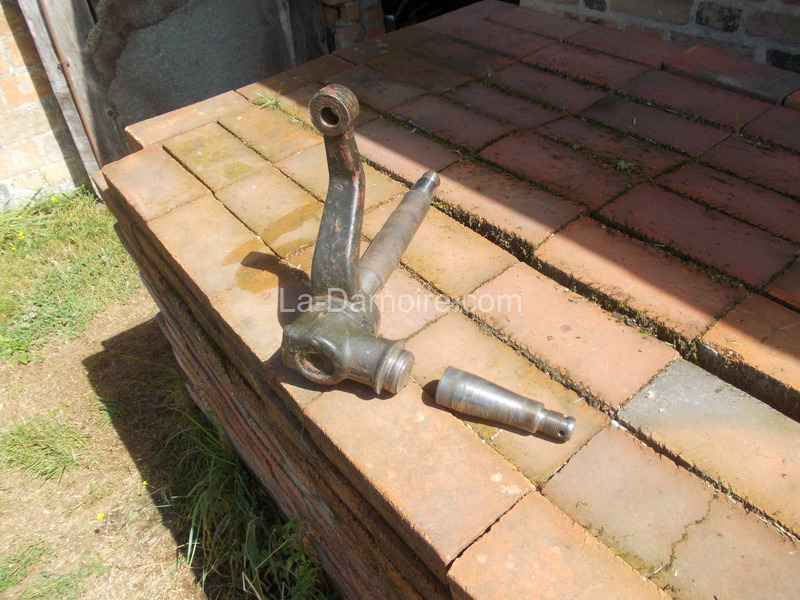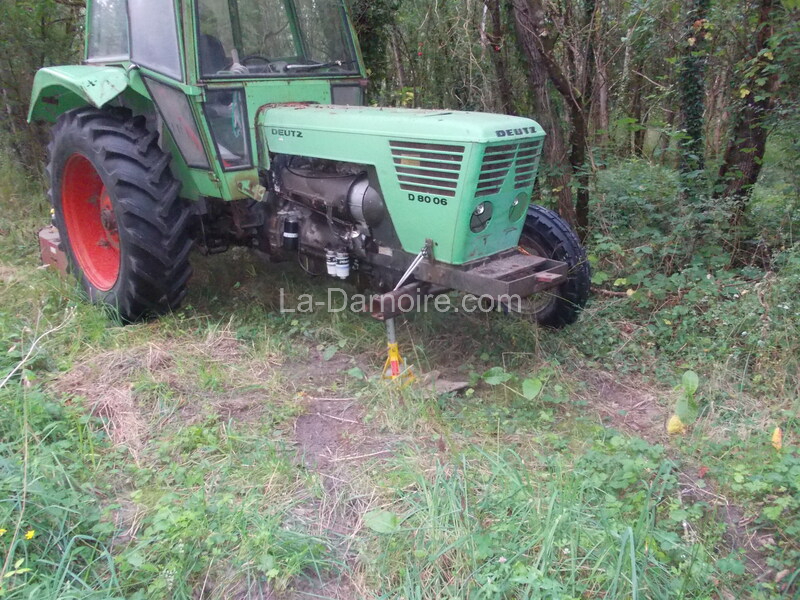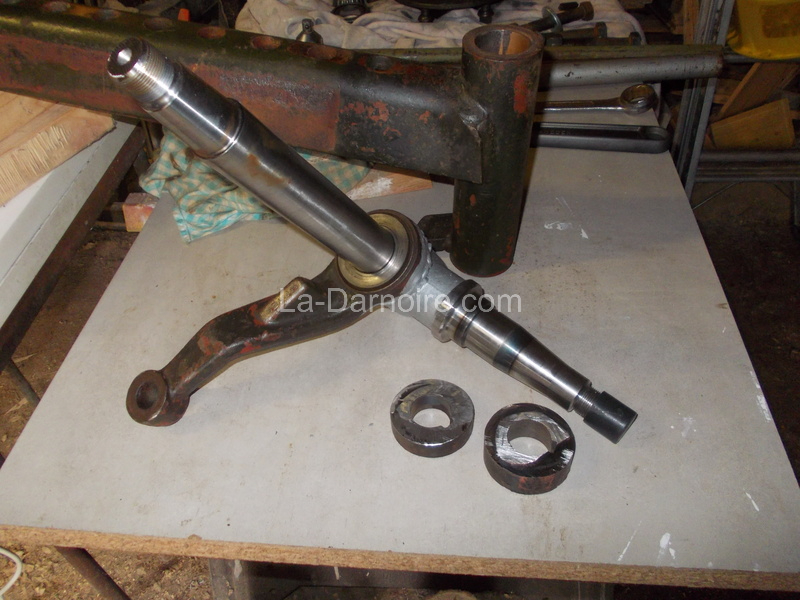So there I was, cutting the grass in the alleyways in the woods with the tractor, minding my own business, and whistling the Toreador song from Carmen.
At least, I think that’s what I was whistling. The tractor is rather loud, so I couldn’t really hear myself.
And then…
The tractor’s right front wheel fell off.
No, not the tyre. The entire wheel.
Well, that put paid to the grass cutting. I switched off, and got out to examine the damage.
The stub axle had simply sheared in half. So I got out the hi-lift jack and raised the front of the tractor. This was not as straightforward as usual, because the tractor appeared to have broken down slap-bang in the middle of the La Darnoire Horsefly Society’s Annual General Meeting.
I then walked back to the house, got the wheelbarrow and an axle stand, and brought the wheel back home (complete with hub).
Fetching the heavy-duty spanners, it was a fairly easy task to remove the wheel from the hub. Here’s the broken bit (once I had everything taken apart of course!)

Then I took the spanners to the tractor.
For those who don’t know, the stub axle (which holds the wheel hub) is an integral part of a thing called a spindle. This is attached to the axle. In this particular tractor, a Deutz 8006, the axle is in two parts. This enables you to extend the front wheels outwards for added stability should you so desire.
However, due to rust, I was unable to extract the spindle from its housing in the axle. So this necessitated yet another trip back to the house for the super-heavy-duty shifting spanner, extension bar, and the old standby, a large hammer.
After an hour or so, I realised that this was just not going to work. The only option was to remove the entire half-axle.
Back to the house for the wheelbarrow.
The half-axle came out fairly easily, all things considered. Of course I had to remove half the steering tie rod as well, because the ball joint connecting it to the spindle was also rusted solid. Here’s what the tractor looked like after this operation (no, the bungee cord is not holding up the remains of the axle. It’s keeping the remaining half of the steering rod out of the way).

To cut a long story short, I soaked all the removed bits in diesel overnight, and then with a liberal spray of WD-40 and the application of the aforementioned hammer, everything could be separated into its component parts.
Although the stub axle could in theory be welded back on to the spindle, I don’t have access to a lathe. And my welding skills are somewhat rudimentary. So a new spindle was required.
This was when the fun started.
Numerous online tractor parts websites were visited. I eventually discovered that the broken spindle was not actually original. Not only that; it didn’t even belong to the same model tractor. It seemed to be the correct size for a Deutz 5206. Which is very different to the 8006. Prices for this part varied tremendously (even over €1000 at one site) but I finally tracked down a spares website in Germany, and managed to obtain the part for €79. Plus postage.
I couldn’t obtain the correct part for the 8006 because the connections to the steering arms were different. The late Aged FIL had obviously done some bodging in the past.
Of course when the part arrived, it was 20mm too short. I then discovered why. The late Aged FIL had welded a pitman arm to the spindle. This particular pitman arm is not a part belonging to the 8006. And it doesn’t quite fit on the 5206 in the place where it was located either; it should go at the top of the spindle, not the bottom. Yet another late Aged FIL bodge.
Well, there was no option but to cut off the old pitman arm, and weld it to the new spindle, in the same place as the old one. Just out of interest, I looked up the price of a new pitman arm. €845. No thank you. Before cutting off the old arm, I measured the angle between the arm and the stub axle, so that it could be connected in the same orientation on the new spindle:

However, this led to a new issue. At the top of the spindle, just below the heavy-duty nut, is a conical washer. The only way I could get the nut to fit properly was by cutting the conical washer in half. With a hacksaw. Which was not enjoyable.
Still, a coat of paint later and the spindle was ready for reassembly. Here’s the cut washer – the thin half (the bit required) is 17mm thick. It’s in front of the new spindle, which is in front of the half-axle.

I carted everything back to the tractor in the wheelbarrow, and put everything back together with loads of grease around the bits which should have grease.

The tractor is now operational again, yay.
